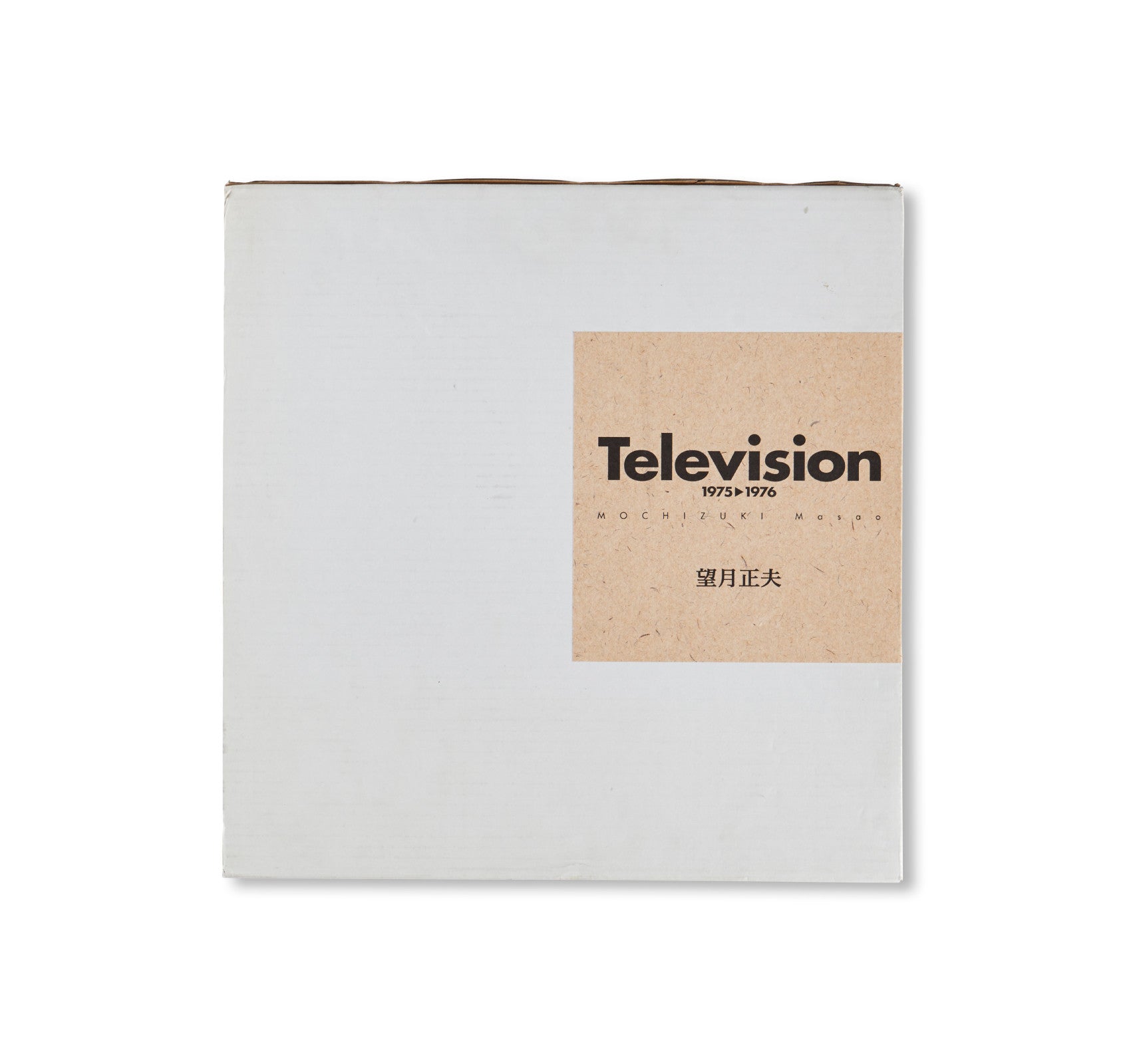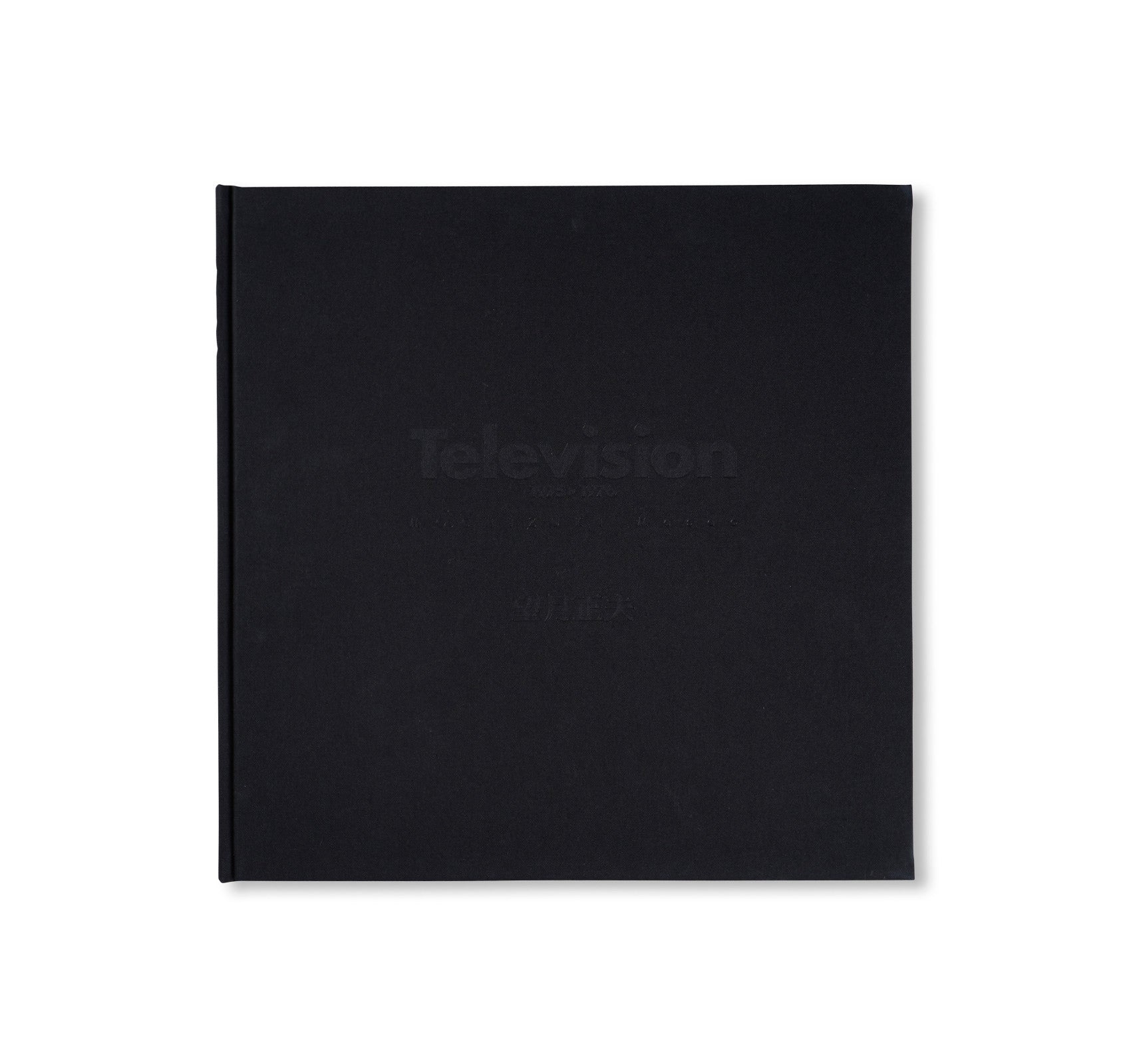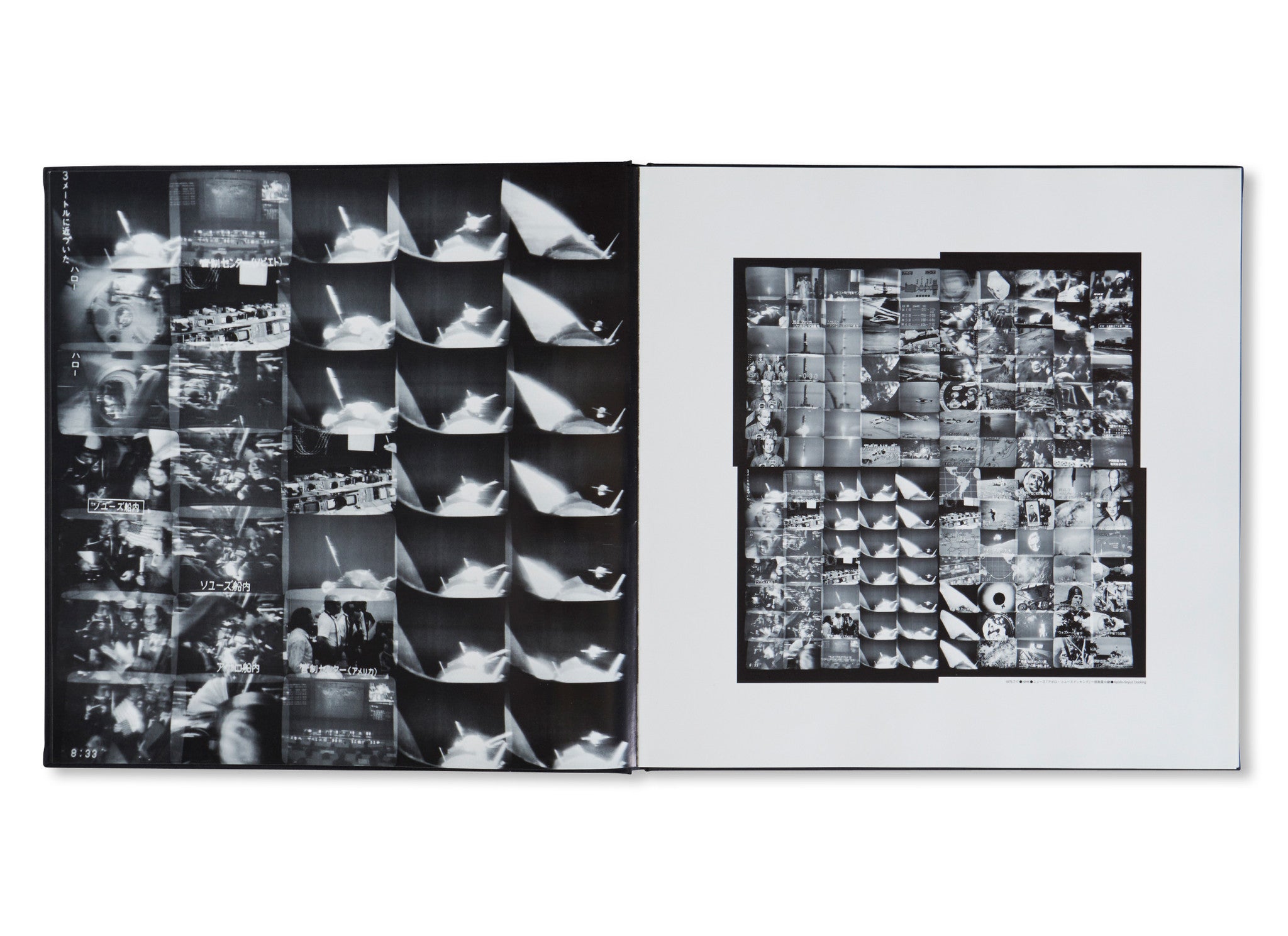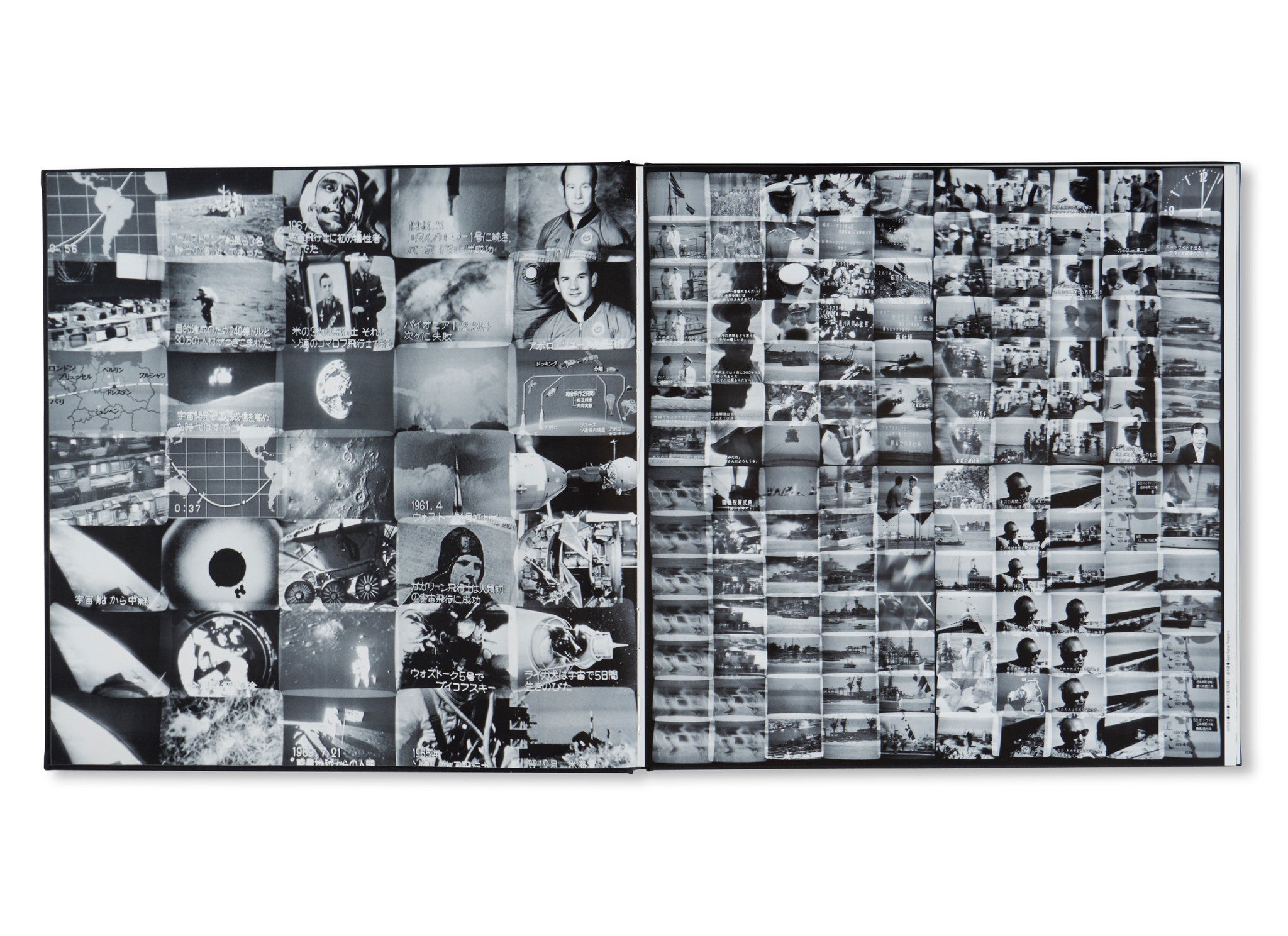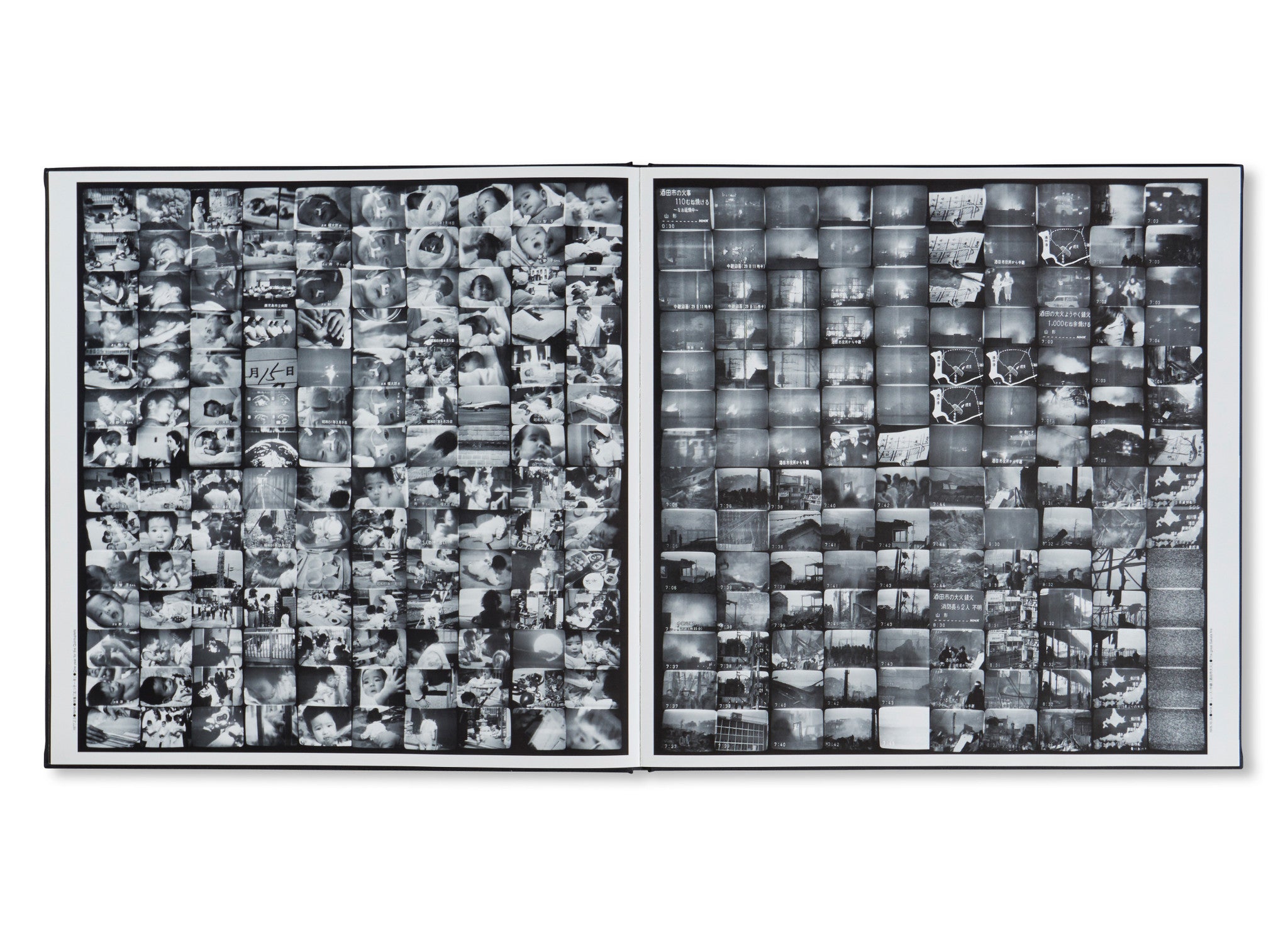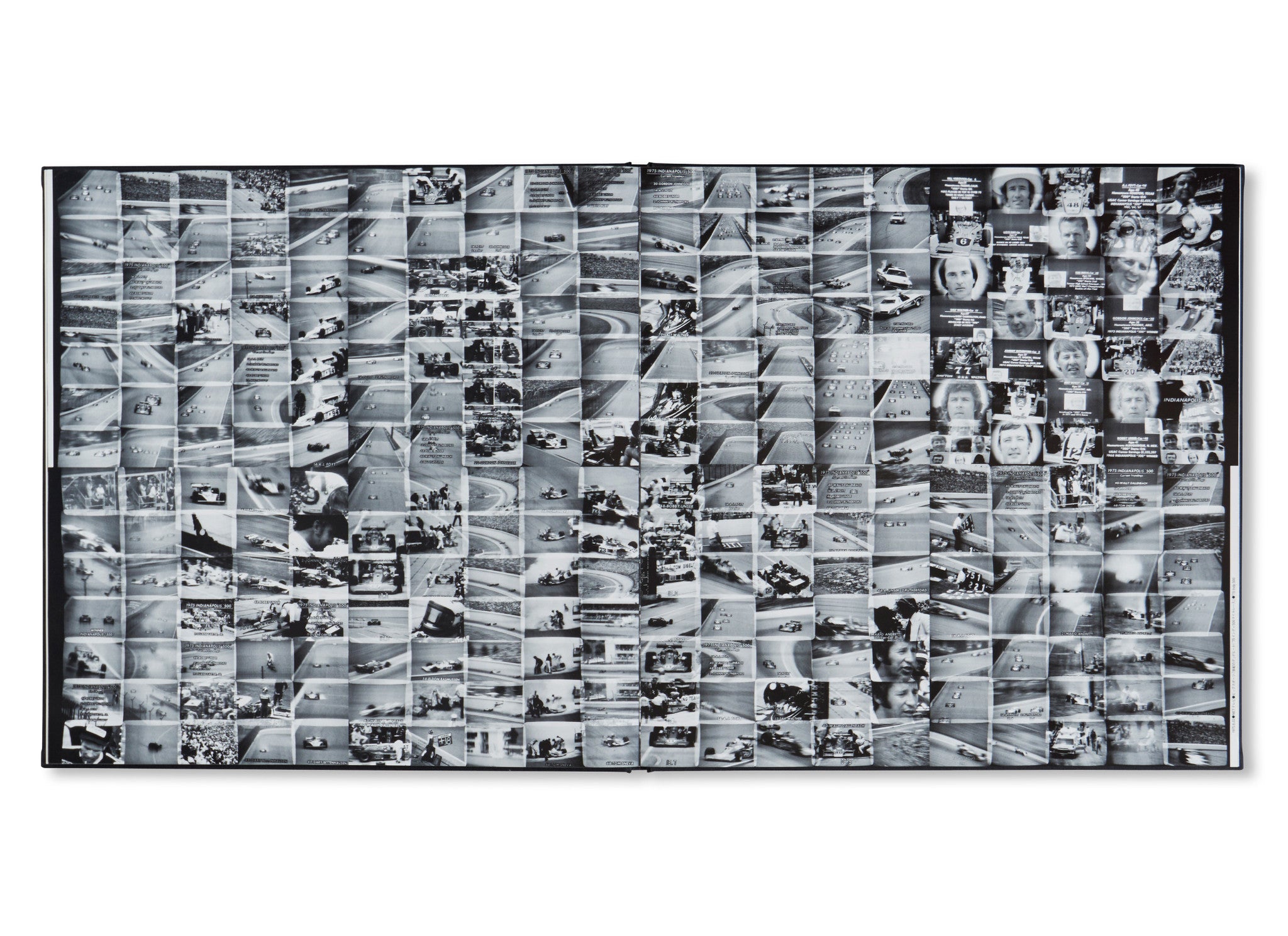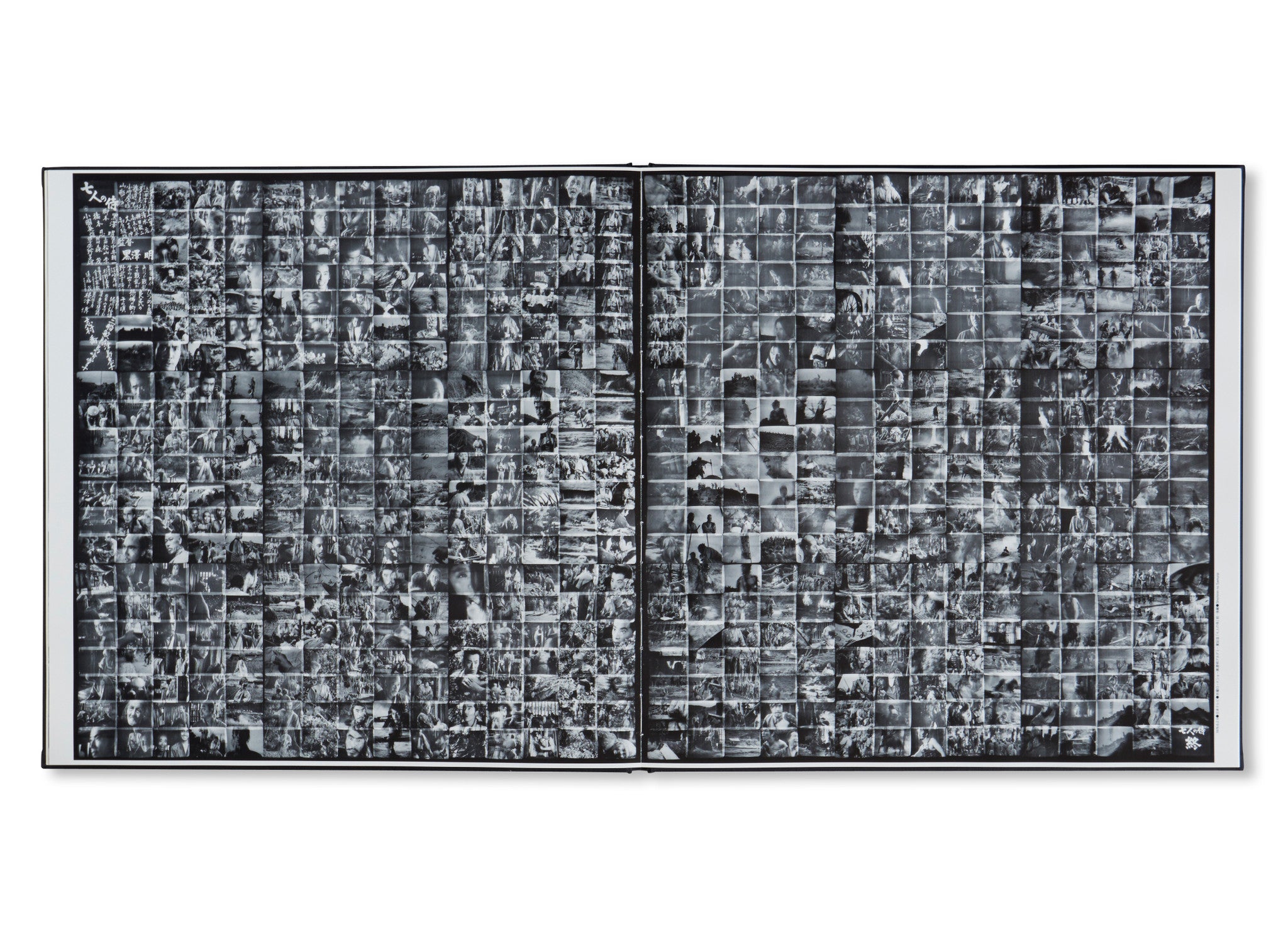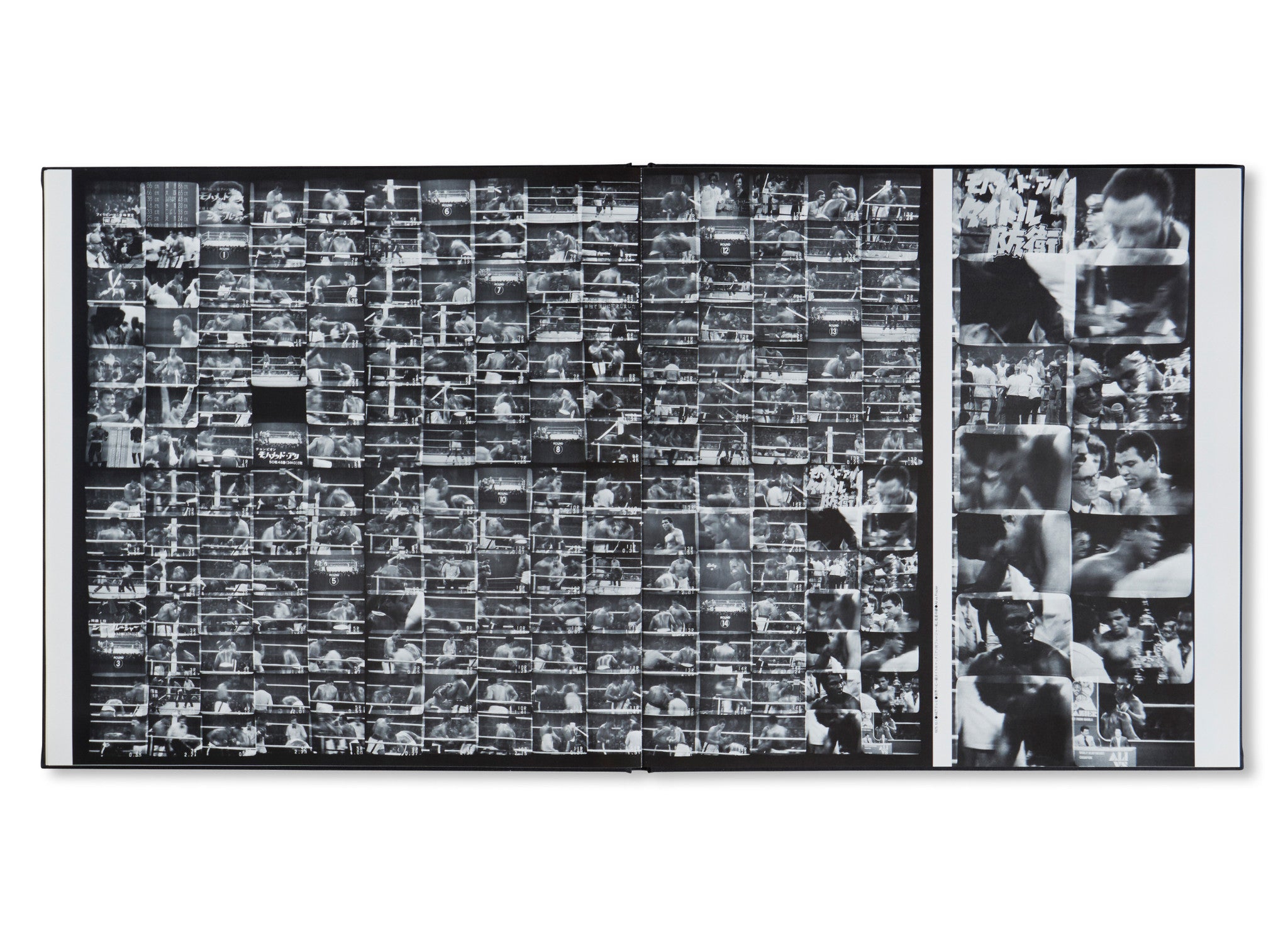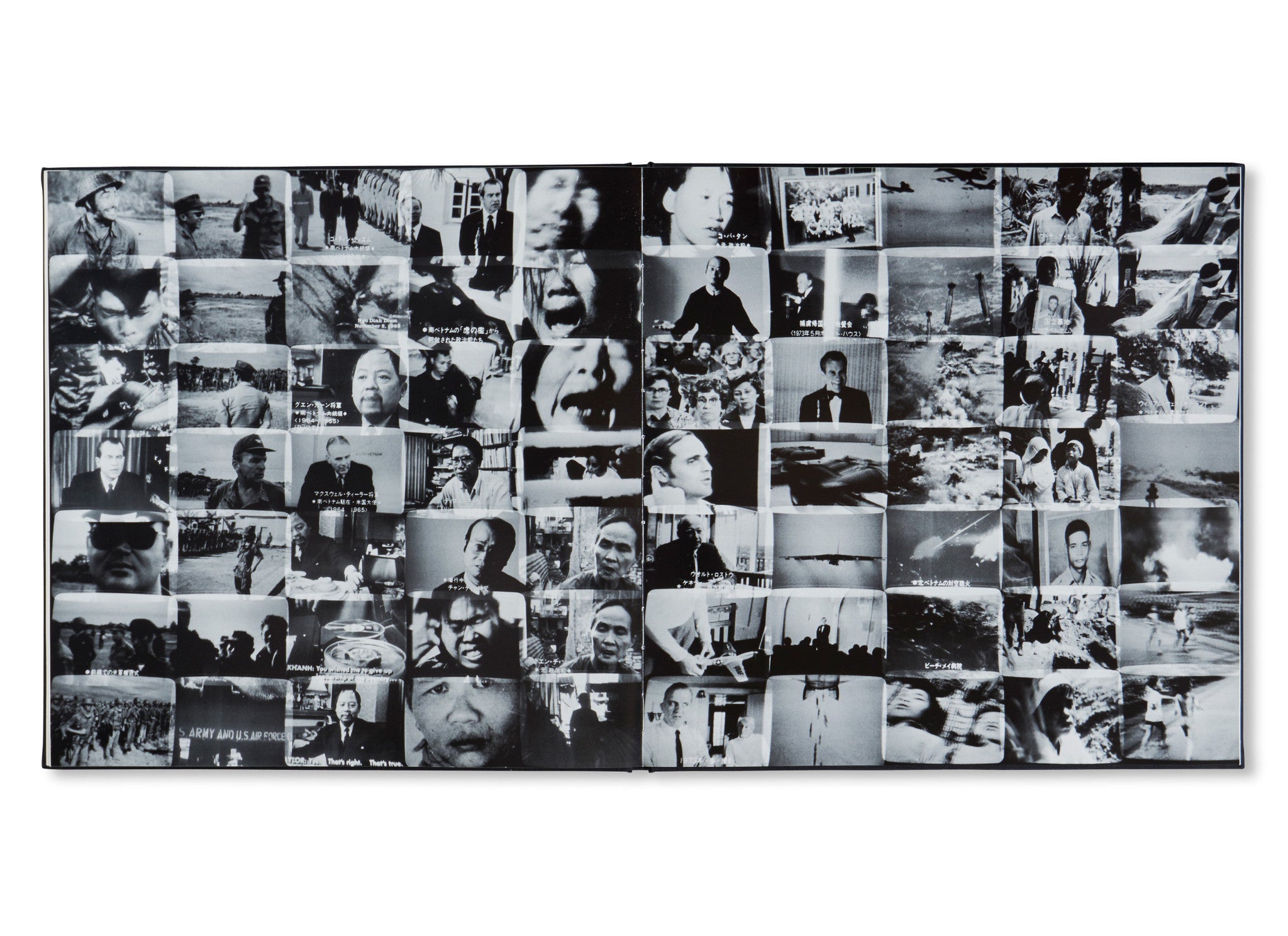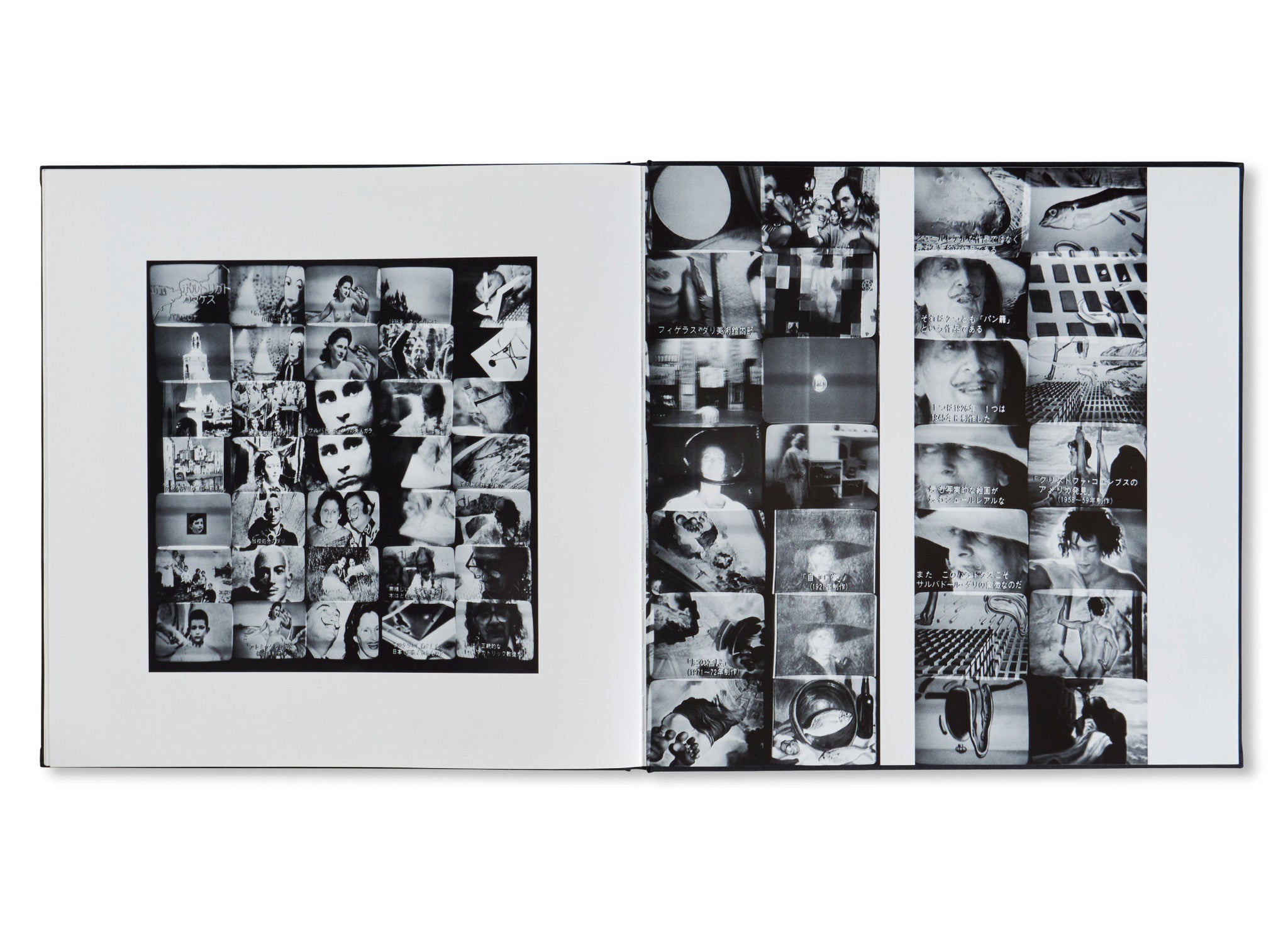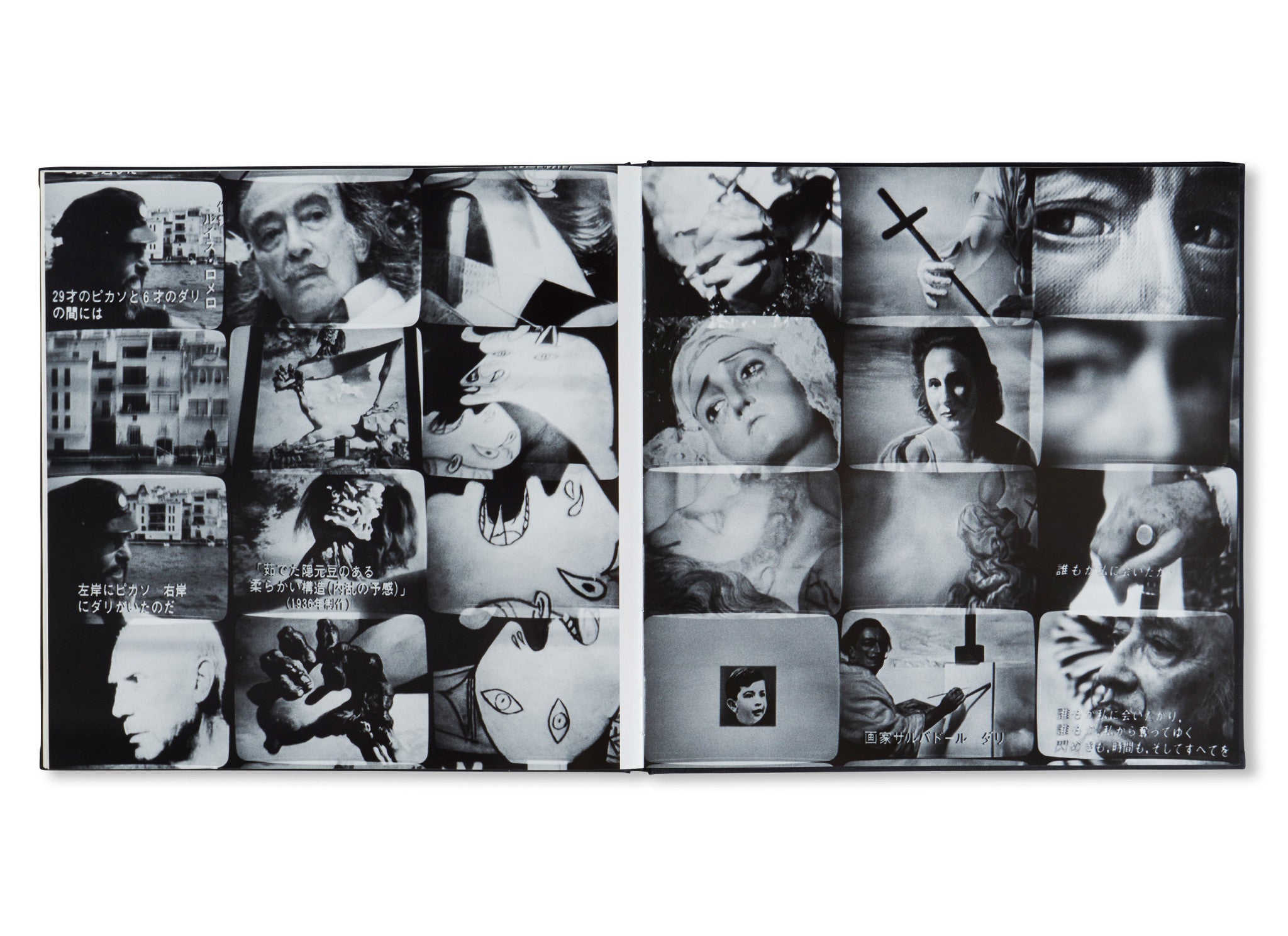TELEVISION 1975-1976 by Masao Mochizuki
写真家、望月正夫の写真集。本シリーズは、1975年から1976年にかけて、当時まだ家庭用ビデオが広く普及していなかった時代に、事件報道番組や娯楽番組など、その時々に人々の興味を引いた様々なテレビ番組を、まさにリアルタイムに1プレート(1枚の6x6フィルム)に35コマの映像を多重露光によって納めるという手法でドキュメントした作品。これらの作品では、当時のテレビ番組の映像が断片化され、記憶や感情にダイレクトにアクセスする一枚の新たなイメージとして再構成されており、本書制作にあたり、数多くあるシリーズの中から35作品(182プレート 6,370コマ)を収録。
「暗くした部屋の片隅にポツンと置かれた、15インチ白黒テレビの光るブラウン管の一コマ一コマは、幻のように現れてはすぐに消えていく。が、歴史もまた同時にその点滅の中で繰り返されていたのだ。そして、7000回のシャッター、7000回の快感すべてが、一枚一枚の像として残された。」- 望月正夫「P.G.I. LETTER 175」より
A photo book by Japanese photographer, Masao Mochizuki. Mochizuki documented a year of Japanese television between 1975 and 1976, when television was not yet widely available. He created an archive of programs of historical importance as well as of popular interest, that had been unceasingly consumed over the twelve-month period. Overlaying a grid of thirty-five frames on the focusing screen of his camera, he released the shutter 35 times to a 6 × 6 cm plate until the entire plate was exposed, each finished plate containing 35 different images combined into a seamless grid of television screens. Mochizuki’s television montages reconstruct the fragments of broadcasts of that time into new images that directly connect to our emotions and memories. Television 1975-1976 contains a collection of 35 pictures, 6370 shots on 182 plates that have been selected for printing by the photographer.
On the luminescent screen of a 15-inch black-and-white television set in a darkroom, each frame of a program appears momently and then disappears as if it never existed, while history is repeated within the flashing lights of the television. Every single one of the 7000 exposures, of the 7000 bursts of euphoria was preserved in images. - Masao Mochizuki, from P.G.I. LETTER 175
